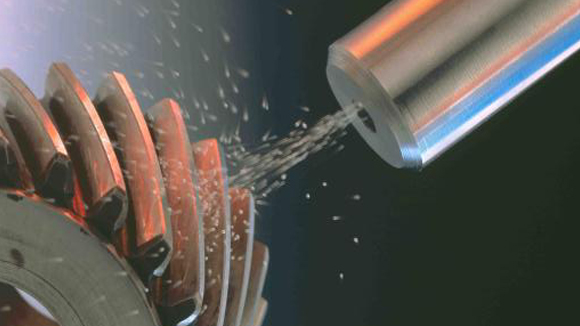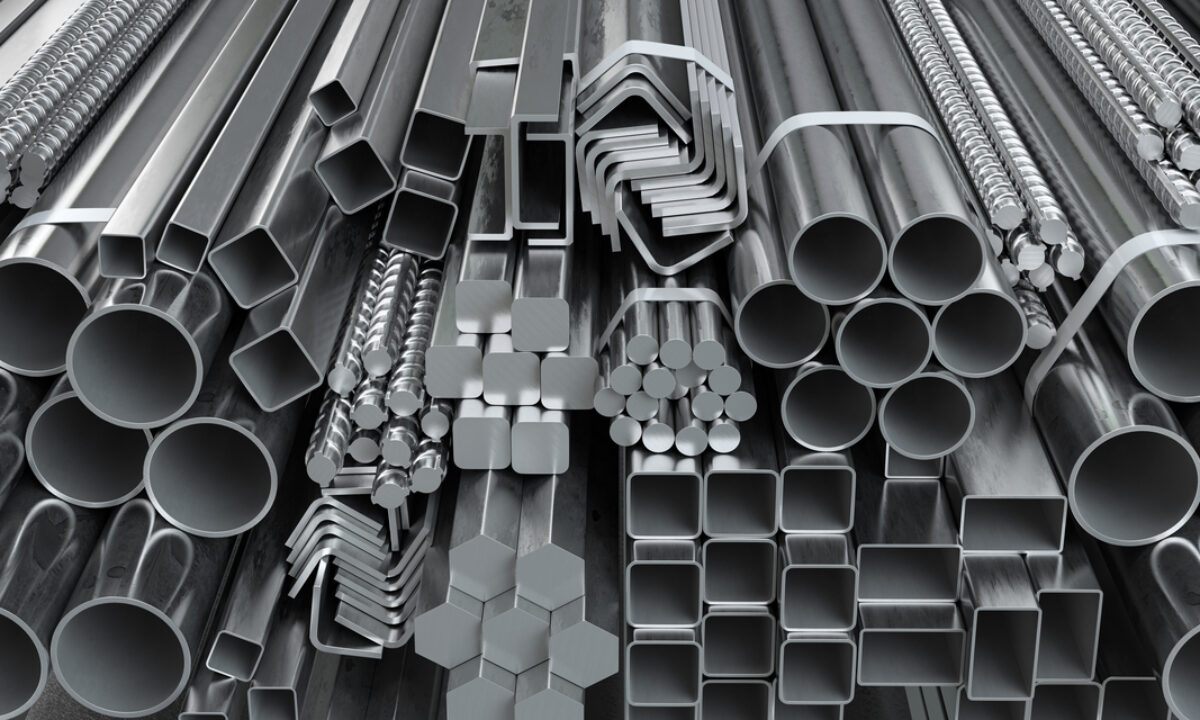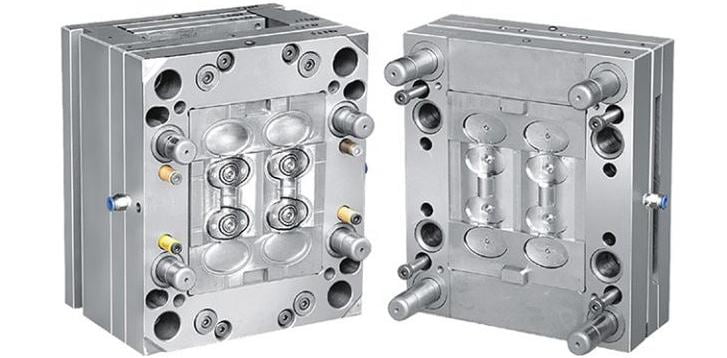Everything You Need to Know About Bead Blasting
Upload Time:
Feb 25, 2024
There are various finishing techniques or methods used in different industries. This article will only discuss about a specific finishing technique – the bead blasting. Let us know the importance of this technique and how it works.
Dedasun will provide you this detailed guide about bead blasting finishing. You will also learn its advantages and disadvantages. Thus, you can know whether this finishing will suit your applications. You can also apply the tips we provide so you can benefit the most.
What is Bead Blasting?

It is one of the finishing technique that is used to manage an object’s surface. Abrasive materials such as small glass spheres are blasted using a very high pressure.
Metal parts commonly undergo bead blasting finishing step. Its main function is to remove debris, paints, rusts, and more.
A very high-pressured bead-shaped tool shoots are used in this process. This process is also allows the components to achieve a clean, smooth, and shiny surface.
How Does Bead Blasting Works?

In terms of process, the bead blasting finishing and other blasting methods have similarities. Their only difference is that bead blasting finishing technique uses bead or sphere-shaped tools.
This technique is performed in a rough surface leaving a coarser finish. The glass bead leaves an impact to the component surface. Thus, providing the material with a uniform finish. Achieving a uniform finish is due to the sphere dimpling.
The bead blasting finish is commonly used for manufactured components. Parts requiring a smooth, satin, or dull finish also uses this process. Whether bead or steel shot used, this process provides the components with tensile conditioning.
Bead blasting is your best post-finishing option for your components that require a consistent rough surface.
Blasting process that uses fine glass beads is usually carried out on parts made from aluminum requiring satin or dull finish. On the other hand, blasting process that uses coarse glass bead offers uniform jagged finish. It can also be used for covering all the component’s surface imperfections.
This surface finishing also uses other materials. It includes fine grits of garnets, silica carbides, aluminum oxides, and more. It will leave your component’s surface with a grayer or darker finish. However, the glass bead blasting helps in retaining the material’s base color to ensure a brighter surface finish.
Different Tools Used for Bead Blasting Process
If you want to achieve a perfect bead blasting result, using an effective equipment can help. Below are the different tools and equipment needed for this process.
Glass Beads

It is one of the most necessary media of bead blasting finishing technique. It is recyclable and environmentally-friendly. Soda-lime glasses that are lead-free are used to make the beads. These materials are formed into spherical shape. Using glass bead blasting provides soft texture on a component’s surface. Thus, it is gentler than other abrasive blasting finishing process.
Blasting Cabinet

The primary equipment used in this process is the blasting cabinet. It should be made with the highest quality to make sure that the process is successful. High-quality cabinets will be a big contribute to the safety of the operator.
A top-notch cabinet are assembled using solid materials. Steel is the most common material used for construction because of its sturdiness. Steel bead blaster cabinet are guaranteed durable and long-lasting. In order to have a cabinet with strong legs, it should be welded with durable and high strength legs.
In that case, the legs can support the overall weight of the cabinet including the blasted components, and bead media. Unstable cabinet can cause wobbling of the machine and become dangerous to the operators.
A high-quality blasting cabinet should have the most important features that include:
- Cabinet sealing. The cabinet should provide consistent inside sealing. Superior sealing ensures that all dust or debris that came from the cabinet will not leave to prevent several health risks to the operators. If the debris or slipper media will fall on the floor can result to injuries.
- View Window Protection. The window of the cabinet is primarily used for viewing the components and workflow inside. Glass beads may cause the window to frost. Thus, it is needed to have protection preventing the visibility to impair. Some cabinet windows are integrated with replaceable protective sheets to protect them from damage.
- Blasting gloves are a protective gear used to provide the operators. It can provide maximum comfort and safety. Typically, the gloves are built-in in the cabinet for a solid grip.
- Blasting Guns. Among the blasting cabinet’s crucial component is the blasting gun. In order to perform the bead blasting process, the machine should have the gun. Several gun designs are available including the complex ones. Each design has different functions. Blasting gun designs include foot pedal, hand pedal, and more. The operator should decide what blasting gun is suitable for your application. However, if your blasting process will take a very long time such as blasting tough materials, foot-pedal blasting guns are ideal since it can provide less fatigue and more comfortable.

Pros and Cons of Bead Blasting
Bead blasting can provide numerous advantages. It can provide textured or smooth surface while offering aesthetic appearance. It offers flexibility and versatility. However, this process also has downsides and disadvantages.

The Pros
- Bead blasting process is cost-effective and less expensive
- It is less aggressive
- This process promotes safety
- Providing a brighter finish without changing the workpiece’s base color
- It is recyclable and reusable
- The glass beads are environmentally-friendly
- During the process, it does not produce any harmful or toxic residue
- Some bead blasted component surface can covered
- This process can be used as a post-finishing option for complex parts
The Cons
- It may not be a very good option for components that needs a very tight and strict tolerance
- This process can be time consuming especially for tougher materials
- Painting the component that is glass bead blasted may not possible
- It is manually operated. Therefore, it can take a lot of effort and labor.
Extensive Applications
Bead blasting technique allows any manufactured part to have a uniform surface. However, it does not change the component’s dimensions. With its versatility, it can be used for different material substrate and wide range of industries.
This technique is a flexible process. Intricate and very detailed application can use smaller beads. If your application deals with aluminum, stainless steel, and more metal materials, medium-sized beads are the best choice.
Bead blasting applications are categorized in functional and industrial.

Functional
This process can be used for different functional applications including:
Peening
-Bead blasting can be used for peening process to help metals achieve fatigue resistance up to 17.14%. It also allows the metals to prevent cracking. These are usually used for production of firearms.
De-Burring
-It is used for removing the component’s shard edges after machining.
Cleaning
-This process helps in removing the component’s surface with oil, paint, rust, scale, calcium deposits, and other contaminants.
Finishing
-It is used for providing surfaces with matte finish.
Polishing
-Polishing allows the surface of the metal components such as cast iron, stainless steel, and aluminum to achieve a shiny finish.
Cosmetic Finishing
-It can provide the different parts with aesthetic finish and features.
Preparation
-Metal surfaces are prepared before it undergoes secondary finishing such as painting or powder coating.

Industrial
Bead blasting is widely used for different industries such as:
Aerospace
-It is used for painting preparation of aircraft components.
Automotive
-Bead blasting can be used as finishing option as part of automotive parts production.
Military
-These are used for production of firearms and other military components.
Medical
-Some medical parts made from aluminum undergoes bead blasting process.
Metals that Can be Bead Blasted
Aluminum
Bead blasting is used for cleaning any component surface made from aluminum metal. It can enhance the metal’s strength, corrosion resistance, and durability.

Titanium
This process helps in removing the imperfection from the titanium part surfaces. Therefore, leaving a clean and satin surface finish. The small beads used for blasting will scrape away titanium. Bead blasting technique can achieve different finishes such as mirror-like polishing, matte, and more.
Why titanium should undergo bead blasting? Below are the reasons.
-In order of the thin layer in the titanium surface to be removed leaving a smoother finish
-To remove the titanium surface’s layer as a preparation for coating
-Titanium should be bead blasted if you want to add a permanent finish or semi-permanent color to the titanium

Tips to Achieve the Best Bead Blasting Result
There are numerous bead blasting media that are used for the process. Pressure used for bead blasting may also differ in each process. Several variables can affect the overall bead blasting technique result and final appearance.
Thus, appropriate and sufficient specifications should be used to control the variables. Following the tips below will help you achieve an excellent and consistent bead blasting result.

Use low pressure
Take note, glass beads may provide the best functions when used in low pressures. Therefore, you can lower down within 3.5Bar or 50PSI the pressure of your bead blaster.
Using as low as 50psi pressure will allow you to get the best bead blasting result.
Using low pressure can also help in preventing the damage caused by high pressure.

Scrape away oxides or rusts before the process
Rusts and other oxides should be removed before starting the bead blasting process since oxide layer is hard to polish. Stains can also be hard to remove because the glass beads will not strip them off. Instead, using a sharp cutting abrasive is used to remove them. Crushed glass can also be used for a fast process.

Critical features should be added with masking notes
If your components have features or surfaces that must not be finished with bead blast, you should make a masking callout. Components that have critical features are the sealing and groove surfaces of O-ring. Features with small pitch threads can also be added with masking requirements.

Grit and Media Size Specifications
The bead blast finish result can be determined by the media you will use. As an example, if you use a very fine glass beads in the process, you can achieve a uniform satin finish.
On the other hand, if you use coarse glass beads, you can also achieve a uniform rough surface finish. Using steel shots can also help you in texturizing the materials while polishing the surface.
Meanwhile, if your abrasive material grit is low, it means that the particles are coarser. However, the higher the grits, means the particles are finer.
Media are available in different sizes. It includes coarse, medium, fine, and very fine.
Difference Between Sandblasting and Bead Blasting

These two processes differ in terms of the materials that are used in the process. The safety concerns involved in these processes also have differences.
Sandblasting technique uses a silica sand while bead blasting process uses high pressure and spherical glass media.
In terms of speed, sandblasting can be a faster technique to perform compared to bead blasting. However, bead blasting technique can provide a smoother and gentler process. Thus, damage can be prevented. It will also not change the dimension of the component providing an optimum polished quality surface.
Relevant News










